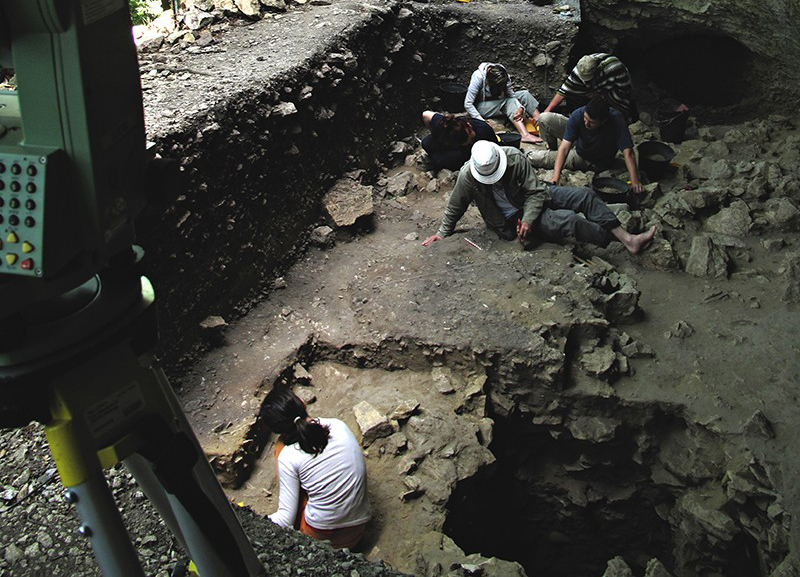
A new study published on Wednesday argues that the first Homo Sapiens in Europe took shelter in a cave in France.
The study, which was published in Science Advances, points to multiple artifacts recovered in the cave — including stone tools and a child’s tooth — to argue that Homo sapiens dwelt in the cave 54,000 years ago.
“It is exciting to see that Homo sapiens was in western Europe several thousand years earlier than previously thought,” said Marie Soressi, an archaeologist at Leiden University in the Netherlands. “It shows that the peopling of Europe by Homo sapiens was likely a long and hazardous process.”
Despite the team’s excitement, their findings have been met with some debate over whether the species is actually Homo sapiens or Neanderthal. The team is attempting to extract DNA from the teeth samples found at the site to determine the species definitively.
The researchers believe that the Homo sapiens lived there for only a few decades, finding that their time in Europe is roughly 10,000 years earlier than other evidence of the species on the continent — besides a site in Greece which contained the oldest Homo sapiens fossil ever discovered in Europe.
Greek site’s Homo sapiens fossils are over 100,000 years older than French cave’s
The team of researchers dated the skull to about 210,000 years old, which makes the skull about 150,000 years older than the oldest fossil of Homo sapiens found in Europe and the third-oldest known example of modern humanity.
A second skull found in the same location was estimated to be at least 170,000 years old belonged to a Neanderthals, a species widespread in Europe until 40,000 years ago, when Homo sapiens took over.
The two skulls (named Apidima 1 and 2) were found together in the late 1970’s in the Apidima Cave which is located in the Peloponnese in southern Greece.
Initial attempts to age the skulls were inconclusive in part because the skulls were found wedged high in cave walls and may have been mixed by the action of a mudflow.
Greek researcher Katerina Harvati, Director of Paleoanthropology at the Eberhard Karls University of Tübingen in Germany, and her colleagues found the relevant skull fragments in a museum in Athens.
Both were recognized as being human fossils of some sort, but had not been dated or properly analyzed. Dr. Harvati and her team have now done so, using computer reconstruction, a technique unavailable to the original finders.
The research team ended up creating virtual reconstructions of parts of the skull and used a radiometric dating method — one that analyzes the decay of uranium to determine the age.
The challenge scientists now face is to figure out how Apidima 1 fits into our ancient history.
Over the past two decades, researchers have gathered a great deal of evidence indicating that human populations that live outside Africa today, all descended from small groups of migrants who departed the continent some 70,000 years ago.
See all the latest news from Greece and the world at Greekreporter.com. Contact our newsroom to report an update or send your story, photos and videos. Follow GR on Google News and subscribe here to our daily email!



